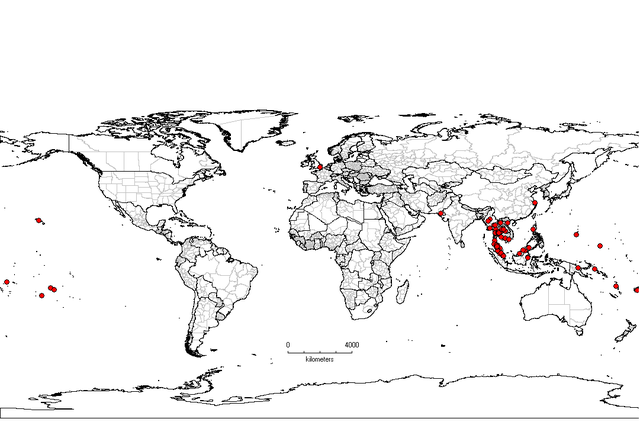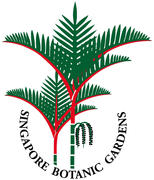Nomenclature
Ipomoea aquatica Forsskål, Fl. Aegypt.-Arab. 44. 1775.
Convolvulus repens Vahl
Ipomoea repens Roth
I. reptans Poir.
I. subdentata Miq.
Description
Fang R.C., G. Staples, et al. 1995. Convolvulaceae in P. Raven & C.Y. Wu (eds.) Flora of China 16: 271–325.
Cytology
Fang R.C., G. Staples, et al. 1995. Convolvulaceae in P. Raven & C.Y. Wu (eds.) Flora of China 16: 271–325.
Biogeography, Ecology and Natural History

Native and cultivated throughout tropical Asia: Australia, China, Bangladesh, Cambodia, India, Indonesia, Laos, Malaysia, Myanmar, Nepal, New Guinea, Pakistan, Philippines, Sri Lanka, Thailand, Vietnam; introduced, cultivated, and often naturalized in Africa, Australia, Pacific Islands, South America.
China: In marshy habitats:
ditches, ponds, rice paddies, waste areas.
Thailand: Floating
in still waters or creeping on wet soil, in sunny rice fields, muddy drinking
places, swamps; altitude: sea level to 400 m.
Flowering: February, October–December; fruiting: February, October–December.
Fang R.C., G. Staples, et al. 1995. Convolvulaceae in P. Raven & C.Y. Wu (eds.) Flora of China 16: 271–325.
Staples, G. 2010. Convolvulaceae. Fl. Thailand 10(3): 330–468.
Other information
Commonly cultivated as a pot herb, Ipomoea aquatica is adapted to a warm, moist climate and cannot survive frost. Several races are recognized (without formal taxonomic designation) based on growing conditions (terrestrial vs. aquatic) and plant and flower color (greenish plants with white flowers vs. purplish tinged plants with lilac flowers). The plants have minor medicinal uses and also are used for forage.
There are 2 distinct morphotypes known, though neither has been recognized taxonomically. One has purplish stems, darker green leaves suffused with red, and purplish corollas; it is distinguished by vernacular names throughout Asia, such as phak bung thai (Thai). The other morphotype has greenish stems, brighter green leaves, and pure white corollas, with either white or yellow central ‘eye’; it is referred to, among other names, as phak bung jiin (Thai).
Authorship for webpage


Add new comment